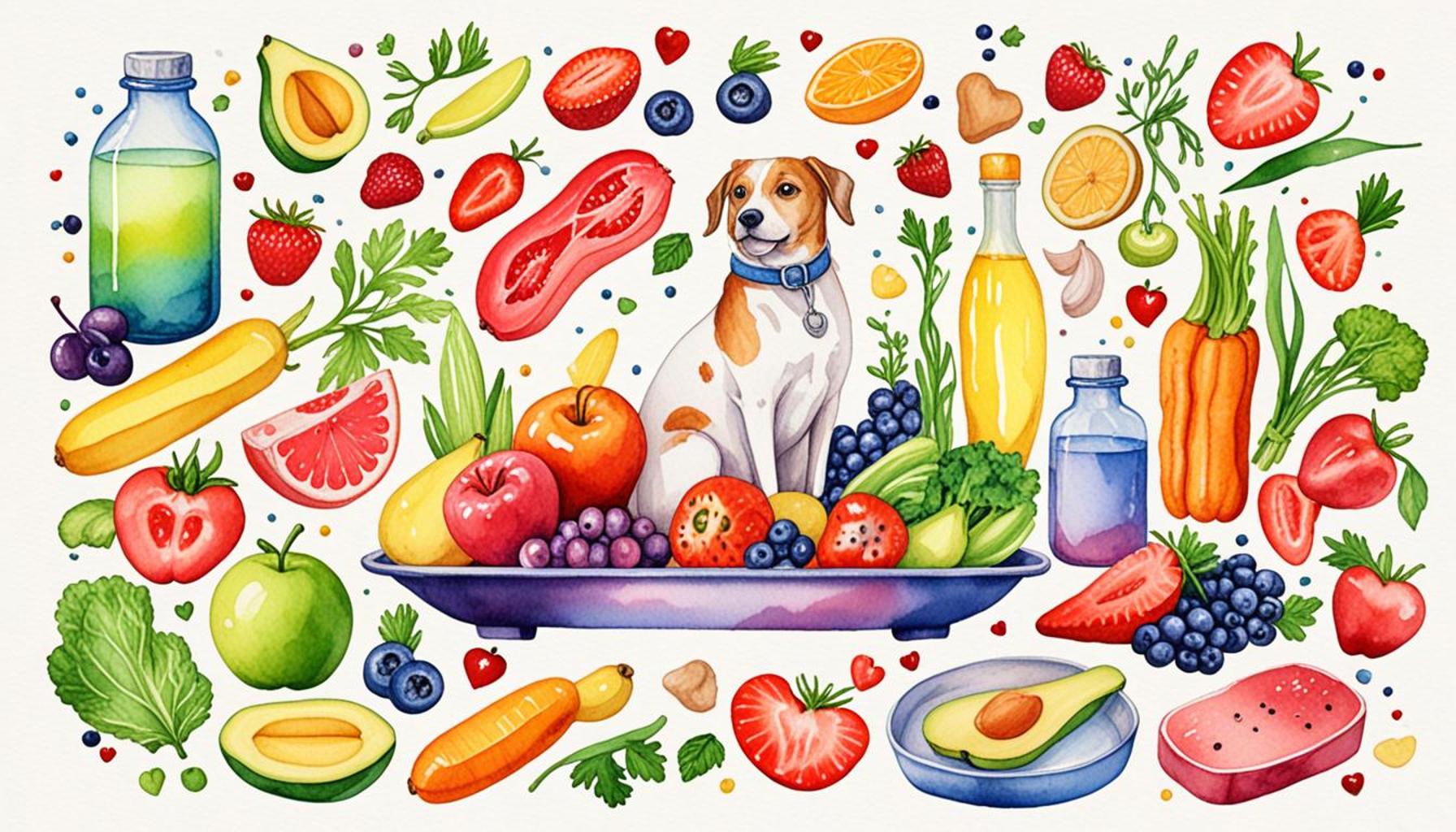Tips for Food Transition: How to Safely Change Your Pet’s Diet

Understanding the Importance of a Smooth Food Transition
Changing your pet’s diet can be a daunting task, but it’s essential for their health and well-being. A sudden shift in food may lead to digestive issues, resulting in discomfort for your furry friend. That’s why it’s crucial to approach this transition with care and attention.
When considering a change in your pet’s diet, there are several key factors to keep in mind:
- Individual Needs: Every pet has unique dietary requirements based on age, breed, and health conditions. For instance, a young puppy may require food rich in protein to support growth, while an older dog may benefit from a diet lower in calories and higher in fiber to maintain a healthy weight. Breeds with specific health issues, such as certain terriers prone to skin allergies, may require specialized dietary formulations to prevent flare-ups.
- Gradual Change: It is essential to introduce new food slowly to avoid gastrointestinal upset. A recommended approach is to mix 25% of the new food with 75% of the current food for the first three to four days. Gradually increase the new food to 50% and then 75%, before transitioning entirely to the new diet over a period of 7 to 10 days. This method allows your pet’s digestive system to acclimate to the changes and minimizes the risk of diarrhea or vomiting.
- Quality Matters: When switching diets, ensure the new food meets rigorous nutritional standards, like those set by the Association of American Feed Control Officials (AAFCO). Foods that are AAFCO-certified have undergone testing to ensure they provide complete and balanced nutrition. Look for labels that specify the life stage of your pet, such as “adult maintenance” or “growth,” to ensure you’re meeting their specific dietary needs.
By keeping these tips in mind, you can successfully navigate the transition. This process is not just about providing a new flavor, but rather aligning with your pet’s health goals and dietary needs. It’s also an opportunity to explore various types of food options, such as grain-free, limited-ingredient diets, or wet foods that can add variety to your pet’s meals.
Always consult your veterinarian when in doubt. They can provide personalized advice tailored to your pet’s health profile and assist you in making informed choices. For example, if your pet has a history of pancreatitis, your veterinarian may recommend a lower-fat diet to prevent recurring episodes.
Join us as we explore effective strategies for making your pet’s diet change a safe and enjoyable experience. Remember, each step counts, and your pet’s happiness depends on it. A thoughtfully executed food transition can lead to improved vitality, behavior, and overall well-being, making it a worthwhile endeavor for both you and your beloved companion.
DIVE DEEPER: Click here to discover the latest trends and innovations
Preparation is Key for a Successful Transition
When it comes to transitioning your pet’s diet, preparation is paramount. A methodical plan not only helps prevent digestive distress but also fosters a smoother adjustment for your pet. To ensure that your pet embraces their new food, consider the following strategies:
- Assess Current Diet: Begin by evaluating what your pet currently consumes. Identify the brand, ingredients, and nutritional value of their food. This understanding will allow you to make informed comparisons with the new diet you’re considering. It’s important to choose a new food that not only meets AAFCO standards but also complements or improves upon the current nutrition.
- Research the New Food: Not all pet foods are created equal. Take the time to explore different options, paying attention to ingredients and their sources. Look for high-quality proteins, whole grains, and healthy fats, and avoid fillers and artificial additives. Brands that provide transparency regarding sourcing and manufacturing processes often offer better nutritional profiles.
- Monitor Your Pet’s Reaction: As you begin the transition, keep a close eye on how your pet responds. Changes in behavior, energy levels, or stool consistency can indicate how well your pet is adjusting to their new food. Make adjustments as needed; if your pet is showing signs of distress, it may be wise to slow down the transition process.
In addition to these preparatory steps, maintaining open communication with your veterinarian throughout the transition is vital. They can offer insights based on your pet’s age, breed, and health conditions. For instance, if your dog has been diagnosed with food sensitivities, your vet might recommend a novel protein source or a hypoallergenic diet to help ease the transition. This support is invaluable, ensuring you’re making the best dietary choices for your pet.
Timing Your Transition Wisely
Understanding the right timing for your pet’s diet change can also make a significant difference. Avoid transitioning during stressful periods, such as moving or adding a new family member. These life changes can exacerbate any potential digestive issues. Instead, choose a time when your pet is free from illness and stress, ensuring a more comfortable adaptation.
A gradual introduction of the new food should take about one to two weeks. Starting with a short mixing duration allows you to observe any adverse reactions. Signs to watch for during this process include:
- Vomiting
- Diarrhea
- Lethargy
- Unusual thirst
If your pet exhibits any of these symptoms, revert to their previous diet and consult with your veterinarian. This step is crucial, as it ensures that any underlying issues are addressed before proceeding with the new food.
Ultimately, a well-planned transition can significantly improve your pet’s overall health, energy levels, and happiness. With attention to detail and a supportive approach, you can turn the process of changing your pet’s diet into a positive experience for both you and your furry companion.
| Category | Key Features |
|---|---|
| Gradual Transition | Introduce new food slowly over 7-10 days to prevent digestive upset. |
| Observation | Monitor your pet for allergies or sensitivities to the new ingredients. |
| Hydration | Ensure that your pet stays well-hydrated during the transition to support digestion. |
| Consultation | Always consult your veterinarian for personalized dietary recommendations. |
Changing your pet’s diet can be a sensitive issue that requires patience and careful management. The gradual transition method is key, as abrupt changes can lead to gastrointestinal distress. You should observe your pet closely, looking for any signs of allergies such as itching or digestive upset. Hydration is also crucial; ensure your furry friend has access to fresh water to aid in the adjustment. Lastly, don’t hesitate to consult with a veterinarian for tailored advice and support, ensuring a smooth transition that boosts your pet’s overall health and well-being. Each pet is unique, and what works for one may not suit another, making professional guidance indispensable during this dietary change.
DIVE DEEPER: Click here to discover sustainable pet options
Implementing the Transition Process
Once you’ve adequately prepared for the dietary change, implementing the transition process becomes the next vital step. This phase can greatly influence how well your pet adapts to the new food, promoting long-term success in aligning their nutrition with their health needs.
Start with Small Portions: Initiate the transition by introducing small portions of the new food alongside your pet’s current diet. A common recommendation is to begin with a 75/25 ratio of the old food to the new food. Gradually increase the new food portion while decreasing the old food over the span of a week or two. This gradual transition allows your pet’s digestive system to adjust and minimizes the chance of stomach upset.
Consistency is Crucial: Stick to a feeding schedule that your pet can rely on. Feed them at the same times each day and avoid making changes during the adjustment period. Keeping their routine stable helps them feel secure and understand that mealtime remains a predictable part of their day. Moreover, retaining the same feeding environment can also play a role in easing anxiety – whether that’s their favorite spot in the kitchen or their designated eating area.
Use Positive Reinforcement: Making mealtime enjoyable can encourage a positive response to the new food. Consider using treats or praises when your pet happily eats the new diet. Engaging their interest with interactive feeding toys or puzzle bowls can also stimulate their curiosity and make eating feel like a game, further encouraging them to try the new food.
Quality and Quantity of Food Matters
When transitioning your pet’s diet, it’s essential not only to focus on the type of food but also on the quality and quantity. High-quality foods, especially those labeled as “grain-free” or “natural,” may promise better ingredients but can also lead to nutritional imbalances if not well-researched or regulated. Always check for certifications or endorsements by reputable organizations to ensure that the new food meets high-quality standards.
A common mistake pet owners make is overfeeding during the transition period, thinking their pets will require more food as they switch diets. However, adjusting the quantity based on the caloric content is crucial. Refer to feeding guidelines provided by the new food manufacturer and adjust accordingly, being mindful that different food formulations can vary significantly in nutritional density.
Stay Alert for Food Allergies or Intolerances
Be vigilant about any adverse reactions throughout the transition process. Pet allergies or intolerances can manifest due to sudden dietary changes. Common allergens include beef, dairy, and grains. If your pet displays signs of itchiness, excessive scratching, gastrointestinal upset, or changes in behavior, it (again) may be necessary to return to their previous food or explore alternative options.
Utilizing a food diary can be beneficial during this adjustment period. Document the specific types and amounts of food consumed, alongside any unusual symptoms noticed after each meal. This chronicle will assist both you and your veterinarian in identifying patterns and addressing potential food intolerances more effectively.
In summary, the process of transitioning your pet’s diet is complex but manageable with proper planning and vigilance. The earlier steps in preparation and timing should seamlessly integrate into this stage, ensuring that your pet receives the proper nutrients and support they need as they adjust to their new diet. By staying observant and implementing best practices, you’ll set the stage for a healthier, happier pet. With careful consideration, each transition can lead to improved vitality and well-being for your four-legged friend.
LEARN MORE: Click here for insights on balanced nutrition
Final Thoughts on Safe Food Transition for Pets
Transitioning your pet’s diet can seem daunting, but with careful planning and attention to detail, it can lead to an enriching culinary experience that promotes their overall health. Remember that the goal is not only to change what your pet eats but to do so in a way that fosters positive behavior and minimizes any discomfort. Consistency, patience, and observation are key elements in this journey.
Utilize a gradual introduction of new foods, keeping a watchful eye on your pet’s reactions. Document any changes through a food diary, which can provide valuable insights into their acceptance of the new diet. Recognizing signs of allergies or intolerances will allow you to swiftly address any issues that arise, further stabilizing the transition process.
Additionally, focusing on the quality of the food is paramount. Selecting high-quality ingredients and ensuring the right balance in nutrition can have positive long-term effects on your pet’s health. As you embark on this dietary shift, it’s also wise to consult with your veterinarian, who can offer tailored recommendations specific to your pet’s needs and health history.
In conclusion, a safe and successful food transition doesn’t just impact your pet’s immediate wellbeing; it sets the foundation for a lifetime of vitality and happiness. By championing these transition tips, you not only enrich your pet’s diet but also deepen your bond with them through informed care. Your furry friend will thank you in their own special way, whether through increased energy or simply by being their affectionate selves.


